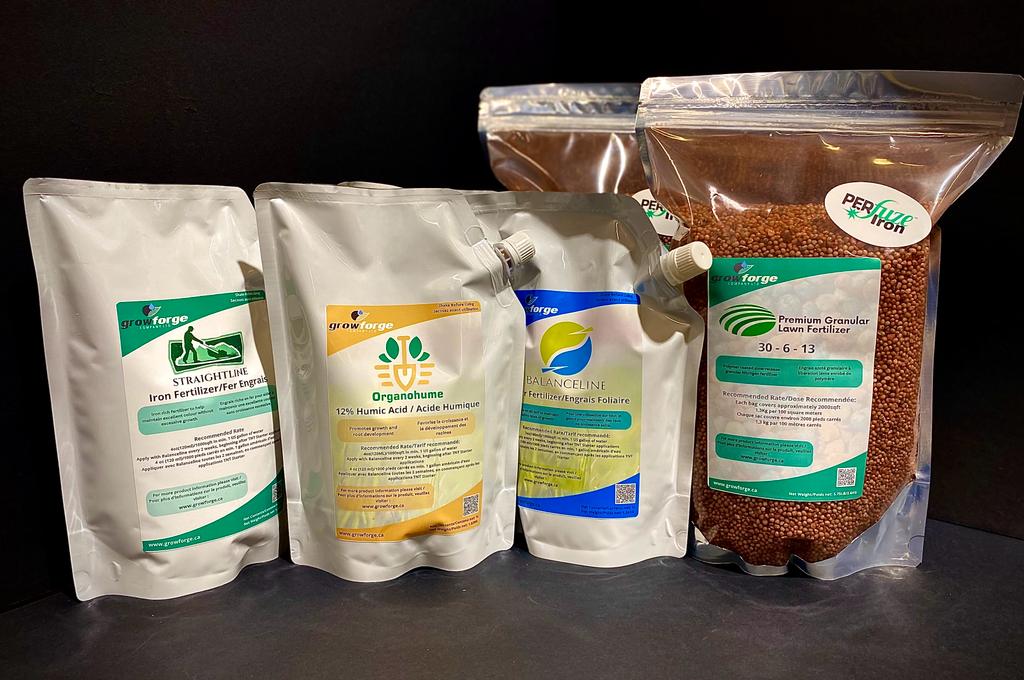Maintaining a lush and healthy lawn requires proper care and nourishment. Fertilizers are a vital component of lawn care, providing the necessary nutrients for growth and health. There are two main types of fertilizers - granular and foliar - each with its own set of pros and cons. In this article, we will discuss the advantages and disadvantages of each type of fertilizer to help you make an informed decision for your lawn.
Granular Fertilizer
Granular fertilizer is a dry, solid form of fertilizer that is spread over the lawn using a broadcast spreader. Here are some of the pros and cons of using granular fertilizer:
Pros:
Easy to apply with a broadcast spreader.
Requires less applications than foliar fertilizer, typically only three applications per season.
A granular fertilizer program is generally cheaper than a foliar fertilizer program.
Cons:
Difficult to apply evenly, which can cause striping and uneven growth.
Causes flushes of growth after fertilizer application and rain events.
Can cause turf to "lean out" and lose color in between applications.
Not as many options for even micronutrient applications or wetting agents using granular fertilizer.
Heavily relies on soil and weather conditions. The granules and nutrients are broken down into usable forms through chemical and biological processes, which are greatly affected by moisture and temperature, making it difficult to predict how long a granular fertilizer will last and what the nutrient requirements of the plant will be weeks in advance.
Typically has higher losses to the environment through leaching and volatilization.
Foliar Fertilizer
Foliar fertilizer is a liquid form of fertilizer that is applied directly to the leaves of the plant using a sprayer. Here are some of the pros and cons of using foliar fertilizer:
Pros:
Nutrients can be applied as required by the plants, causing uniform color and growth with less mowing.
Micronutrients are easily and uniformly applied.
Wetting agents can be added to the spray application.
You can adjust the foliar fertilizer program based on conditions. If clipping volumes increase, reduce nutrient amounts or increase the amount of time between applications.
Relies less on soil and weather conditions. Nutrients are taken in through the leaf tissue, and optimal growth can still be achieved in sub-standard soil conditions like high or low pH and wet or dry soils.
Easier to apply uniformly. Each spray application will overlap the previous causing less striping and uneven growth.
Cons:
Requires more applications and time spent fertilizing.
Requires a sprayer (backpack, tow behind etc.).
Conclusion
Both granular and foliar fertilizers have their advantages and disadvantages. Granular fertilizers are easy to apply, require less applications, and are generally cheaper. However, they can be difficult to apply evenly and heavily rely on soil and weather conditions. Foliar fertilizers, on the other hand, are precise, adaptable, and rely less on soil and weather conditions. However, they require more applications and time spent fertilizing, as well as a sprayer. Ultimately, the best fertilizer for your lawn will depend on your specific needs and preferences. Sometimes, it may be helpful to use both granular and foliar fertilizers, a granular application in the spring to help winter recovery and then a foliar program throughout the summer to control growth. Consulting with a Growforge professional can help you determine which fertilizer is best for you.



